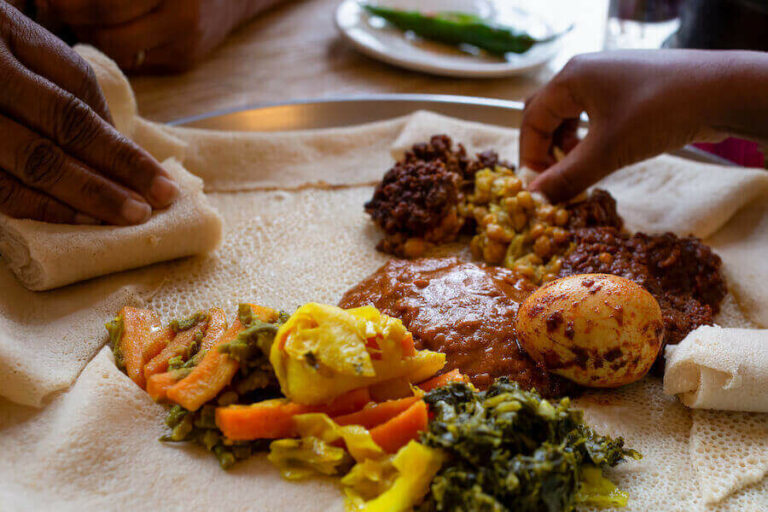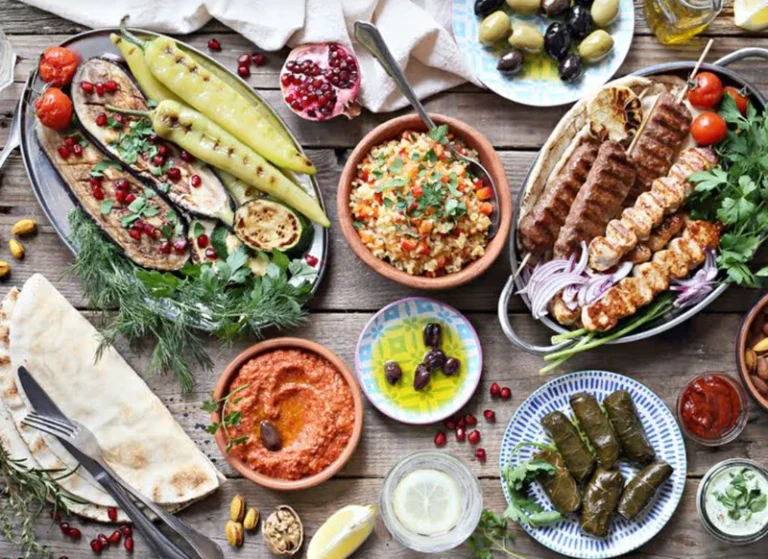Injera is a traditional flatbread from Ethiopia. It is characterized by a soft, sponge-like texture. Making injera at home is not difficult. All you need is a little time and patience.
In Ethiopian cuisine, injera is a common accompaniment to vegetable or meat dishes. The flatbread consists of a simple dough prepared with teff flour. Teff is an ancient Ethiopian pseudocereal also known as dwarf millet. It is naturally gluten free. In Germany, for example, you can get teff flour in well-stocked organic supermarkets or in shops that specialize in African foods.
Due to its sponge-like structure, Injera can absorb a lot of liquid. The flatbread can be rolled up or torn into smaller pieces, for example to dip in sauces and soups. In the traditional cuisine of Ethiopia, it also serves as an edible substitute for a plate.
If you want to make injera yourself, you only need three simple basic ingredients. However, the dough has to rise for a few hours before you can process it further. So you need a little patience for this recipe.
Injera: Basic Ethiopian flatbread recipe

Ingredients:
42 g fresh yeast (one cube)
700 ml lukewarm water
500 g teff flour
1 pinch(s) of salt
Directions:
Crumble the yeast cube into the lukewarm water. Stir the mixture until the yeast chunks are completely dissolved.
Put the teff flour in a bowl and add the yeast water.
Mix flour and water well to get an even batter. Then let the dough rest for at least 6 to 8 hours. It is best to cover the bowl with a kitchen towel.
Now you bake the flatbreads in the pan. To do this, heat a coated pan without fat and sprinkle some salt in it. Then add a ladleful of batter to the pan and toss it back and forth until the batter is evenly distributed and small bubbles form.
Put a lid on the pan and bake the flatbread in it until golden brown. Then repeat the process until the dough is used up.
Injera: tips and hints

It is best to buy the ingredients for Injera in organic quality. So you can be sure that they are not contaminated with harmful pesticides or fertilizers. Teff flour is also occasionally available from German cultivation. Because teff is a very resilient crop, it could also be of greater importance in Germany in the future due to the climate crisis.
Injera can be combined with many dishes. For example, it is often served as an accompaniment to the typical Ethiopian lentil stew Wot. But it also goes well with other stews or vegetable curries. You can also serve injera with various (vegan) dips.
By the way: Injera is traditionally prepared with sourdough and not with yeast. If you are not in a hurry, you can also use sourdough for the flatbread. Then simply replace the yeast in the recipe with seven times the amount of sourdough.


